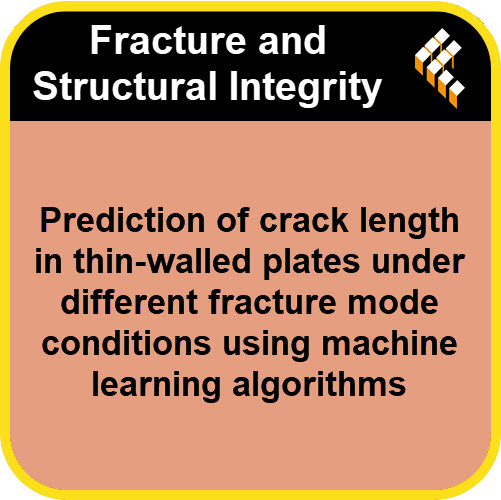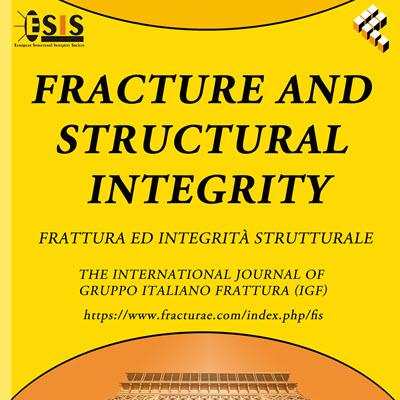Fracture and Structural Integrity: The Podcast
Stay at the cutting edge of fracture mechanics and structural integrity research with the official podcast of the Fracture and Structural Integrity journal. Join us for insightful interviews with top researchers, in-depth discussions of groundbreaking papers, and explorations of emerging trends in the field.
RSS Spotify YouTube Amazon Music
Prediction of crack length in thin-walled plates under different fracture mode conditions using machine learning algorithms
2025-10-16
https://www.fracturae.com/index.php/fis/article/view/5480
This study uses theoretical stress intensity factor data to assess how well machine learning models predict crack length. Thin-walled damage plate under various modes was evaluated based on the theoretical relation. Using theoretical data, this study implemented various ML algorithms to determine the most accurate model for thin-walled crack length prediction. The prediction/true class was used to assess each algorithm using an evaluation matrix, and each class was divided into four levels of crack length for testing and training data. According to theoretical results, SIF increases as the crack length increases, which shows that higher crack lengths cause the structures. The ability of ML algorithms trained on theoretical data to predict crack length using SIF values is investigated in this work. To estimate crack length in thin-walled structures under Mode I, Mode II, and Mode III conditions, the current work successfully evaluated the accuracy in predicting the crack length using ML algorithms. By eliminating the need for experimental/theoretical trials, the suggested ML algorithms not only simplify the process of identifying important input parameters but also provide cost-effective approaches. Finally, the results demonstrate the algorithms’ ability to yield accurate predictions.
DownloadFiletype: MP3 - Size: 3 MB - Duration: 14:19m (320 kbps 44100 Hz)
Powered by Podcast Generator, an open source podcast publishing solution | Theme based on Bootstrap
